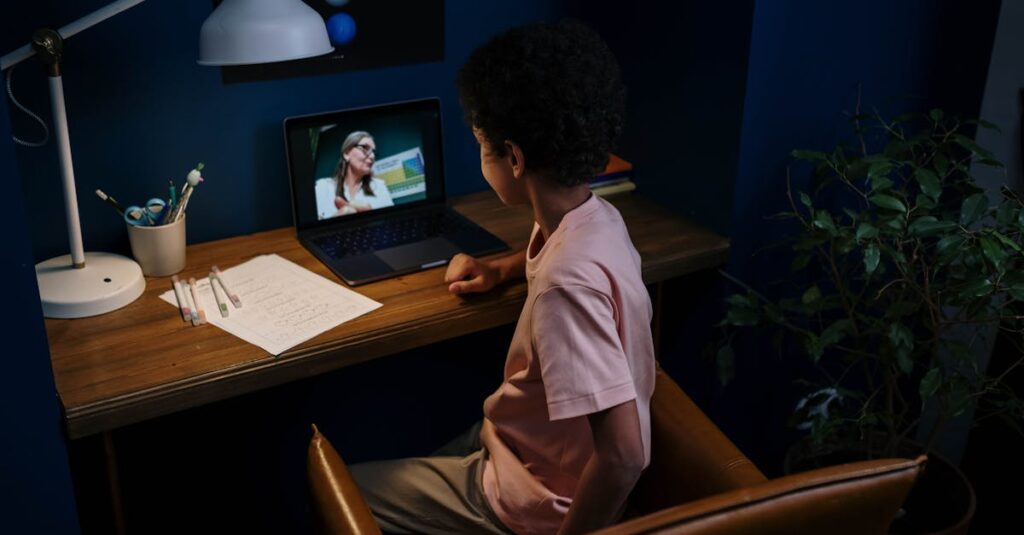Introduction to ChatGPT for Kids
In a world where technology is rapidly evolving, ChatGPT emerges as a tool that can revolutionize personalized learning for children. Imagine an intelligent assistant that adapts to the unique learning style of your child! It’s like having a dedicated tutor who never gets tired and is available 24/7. Your kid can ask questions, get detailed explanations, and even review lessons in a fun, interactive way. Plus, with ChatGPT, learning becomes less about rote memorization and more about understanding and curiosity. Consider it as an engaging way to mix playtime with study time.
Benefits of ChatGPT in Personalized Learning
One of the biggest benefits of ChatGPT in education is its customization capabilities. Unlike traditional classroom settings where one-size-fits-all, ChatGPT tailors its responses based on individual needs.
Whether your child is a visual learner or prefers textual explanations, ChatGPT adapts! It’s also an excellent resource for children who may need extra practice in certain subject areas.
Imagine your kid polishing their math skills through personalized quizzes or enhancing their reading comprehension with interactive stories. The possibilities are endless and incredibly exciting!
How ChatGPT Encourages Engagement
Children today are used to engaging content, whether through videos, games, or interactive platforms. ChatGPT taps into this interest by making learning a dynamic process. Instead of boring worksheets, picture your child embarking on a virtual adventure where each correct answer propels them forward. My nephew, for instance, used ChatGPT to solve a mystery game that required math problem-solving. The excitement on his face as he progressed was priceless! With ChatGPT, learning and play go hand in hand, ensuring your child remains engaged and enthusiastic.
Addressing Emotional Challenges in Learning
Learning can sometimes be an emotionally challenging experience for kids. Frustration and boredom can stand in the way of effective learning.
ChatGPT‘s friendly interface can help alleviate these issues. It offers instant feedback and encouragement, which can boost your child’s confidence.
Remember, every child is unique, and so is their learning journey. Once, my little cousin was almost in tears over a tricky grammar exercise until ChatGPT broke it down into simpler parts. It’s these small yet significant assists that turn learning challenges into triumphs.
Learning should be an enjoyable and rewarding experience for children, and with the right tools and support, they can overcome emotional obstacles to achieve success.
Practical Tips for Using ChatGPT
To make the most of ChatGPT, start by integrating it into your child’s daily routine in a balanced manner. Use it to complement, not replace, traditional study methods. Set up a specific time daily when your child can interact with ChatGPT for a set duration. Keep the sessions varied and exciting to maintain interest. Remember to monitor progress and adjust as needed. Before you know it, your child will be eagerly looking forward to these educational sessions!
Also, don’t forget to ask your child about their experience. Feedback will help you tailor the learning experience even more.
Join the Conversation
We want to hear from you! Have you used ChatGPT for your child’s learning yet? What successes and challenges have you encountered? Sharing your experiences can help other parents on the same journey. Let’s create a community where we support and learn from each other.
Feel free to leave comments, share anecdotes, or ask questions. Together, we can make the future of personalized learning bright and vibrant for all our children. Join the conversation and let’s explore this amazing educational tool together!
Related Posts:
- AI Assistants for Preschool Learning: Fun?
- AI-Driven Self Learning in Kids
- AI in the Classroom: New or Dangerous?
- AI in Early Child Education: Pros and Cons
- AI Chatbots vs. Pre-School Teachers: The Debate

